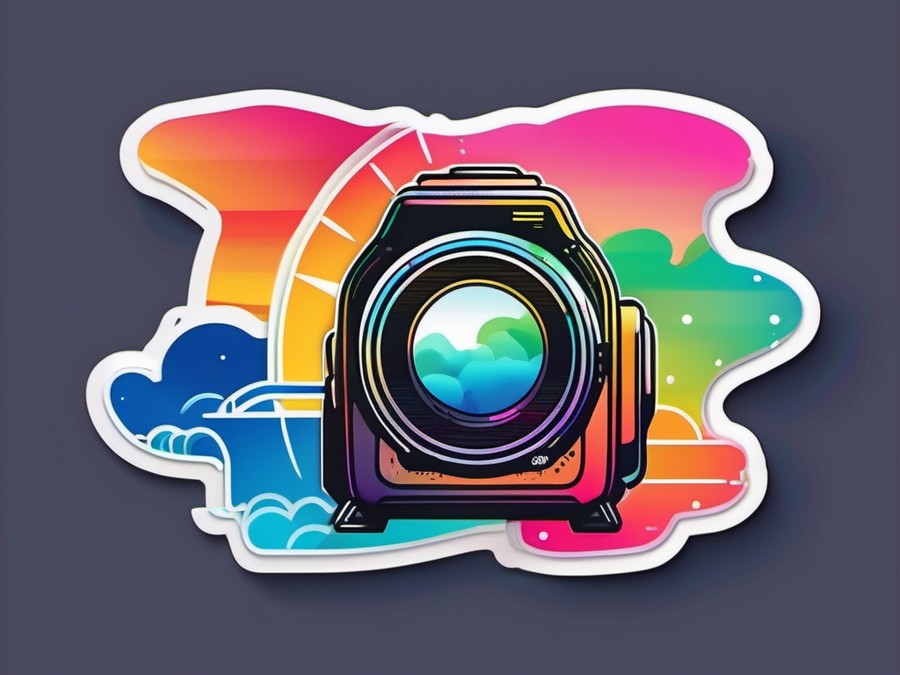· Charlotte Will · Tabletop & Travel Tripods · 8 min read
What is the Best Lightweight Travel Tripod for Photography?
Discover the best lightweight travel tripods for photography, ideal for capturing stunning images on-the-go. Learn key features, top recommendations, and tips for choosing the perfect tripod to enhance your travel photography experience.

Introduction
As a photographer, one of the most essential tools in your arsenal is a reliable tripod. Whether you’re capturing landscapes, portraits, or street scenes, a stable platform is crucial for sharp images. But when you’re on the move, lugging around a heavy tripod can be a pain. That’s why finding the best lightweight travel tripod is so important. In this article, we’ll explore what makes a great lightweight travel tripod and highlight some of the top options available.
Why Choose a Lightweight Travel Tripod?
If you’re someone who loves to travel and capture stunning photos, a lightweight tripod is a game-changer. These tripods are designed to be easily portable without sacrificing stability or performance. They make it possible for you to set up a solid shot anywhere, from the bustling streets of a city link to “What is the best point and shoot camera for travel photography?” to the serene vistas of a national park.
Key Features to Look For
Portability and Weight
The first thing you should consider is the weight of the tripod. A lightweight design ensures that it won’t add too much heft to your already packed travel bag. Look for tripods that weigh less than 2 kilograms—this is a good benchmark for portability.
The Importance of a Lightweight Design
A light tripod means you can take it with you on long hikes or city walks without feeling the strain. It also makes setting up and adjusting your shots a breeze, which is especially useful when you’re racing against time link to “What is the Best Tripod Case for Travel Photographers?“.
Durability and Materials
Durability is key if you want a tripod that will last. Carbon fibre and aluminium are two common materials used in tripods. Carbon fibre is lighter but more expensive, while aluminium offers a good balance between cost and durability.
Carbon Fibre vs. Aluminium
Carbon fibre tripods, like the Peak Design Travel Tripod, offer higher strength-to-weight ratios but can be pricier. Aluminium tripods, such as the Manfrotto Befree Advanced Travel Tripod, provide robustness at a more affordable price.
Stability and Weight Capacity
Even though you’re looking for a lightweight tripod, stability should not be compromised. Check the weight capacity—it should comfortably support your camera and lens setup. A good rule of thumb is that the tripod should have a capacity at least 1.5 times the weight of your gear.
Ensuring Your Tripod Can Handle Your Gear
If you’re using a heavier DSLR or mirrorless camera with a telephoto lens, ensure your tripod can handle the load. This will prevent any unwanted wobble or movement during long exposures link to “What is the Best Tripod for Landscape Photography?“.
Ease of Setup and Use
A tripod that’s easy to set up can save you a lot of time and frustration. Look for features like quick-release plates that allow for rapid attachment and detachment of your camera. Twist locks or lever locks can also make adjustments quicker and smoother.
Making the Most of Your Tripod’s Features
Some tripods come with additional features like built-in levels to help you get a straight horizon. Others have geared centring columns that make it easy to adjust the height without having to disassemble the tripod.
Height and Flexibility
Height is a critical factor, especially if you plan to use your tripod for both low-angle shots and eye-level images. A good travel tripod should extend to at least your eye level while being compact enough to fit in a standard travel bag.
Tall Enough for Your Needs, Compact Enough to Travel
Tripods like the Joby GorillaPod 5K Kit offer flexibility with their wrap-around legs, making it possible to attach the tripod to fences, trees, or other surfaces. This versatility can be a lifesaver in tricky shooting conditions link to “What is the best monopod for travel photography?“.
Top Recommendations
Manfrotto Befree Advanced Travel Tripod
Key Features and Why It Stands Out:
- Lightweight aluminium construction that’s durable yet easy to carry.
- Compact design that folds down to a mere 15 inches, perfect for fitting into carry-on luggage.
- Quick-release leg locks that make setup a breeze.
- Stable and secure, capable of supporting up to 8 kg (17.6 lbs) of gear.
Peak Design Travel Tripod
Innovative Design and Portability:
- Carbon fibre construction that offers a strong yet lightweight solution.
- Packs down to the size of a water bottle, making it incredibly portable.
- Versatile and sturdy, with the ability to convert into a monopod for added flexibility.
- High-quality build that ensures longevity and performance over time.
Joby GorillaPod 5K Kit
Flexibility and Versatility in a Compact Package:
- Wrap-around legs that can secure to virtually any surface.
- Lightweight and compact, perfect for on-the-go shooting.
- Incredibly versatile for various angles and shots, ideal for both professional and amateur photographers.
- Supports up to 5 kg (11 lbs) of gear, making it suitable for most DSLR and mirrorless cameras link to “What is the best mirrorless camera for travel photography?“.
Sirui T-025X Traveler Tripod
Balancing Portability and Stability:
- Lightweight carbon fibre construction that’s strong yet light.
- Folds down to just 35 cm (13.8 inches), making it easy to carry in any bag.
- Stable and secure, supporting up to 6 kg (13.2 lbs) of gear.
- Quick-release leg locks and a geared centring column for easy adjustments.
Leofoto LH-10A Carbon Fibre Tripod
Affordable Option with Excellent Performance:
- Carbon fibre construction that’s light and durable.
- Packs down to 35 cm (13.8 inches), fitting easily into most travel bags.
- Supports up to 12 kg (26.4 lbs) of gear, making it suitable for heavier setups.
- Quick-release leg locks and a smooth, twistable centre column for simple adjustments.
Choosing the Right Tripod for Your Needs
Assessing Your Photography Style
Landscape, Portrait, or Street Photography? Each style has its own requirements. Landscape photographers may need a taller tripod with more stability, while street photographers might prefer something more compact and discreet link to “What is the best complete tripod for travel photography?“.
Budget Considerations
Affordable Options Without Sacrificing Quality: While top-tier tripods offer exceptional performance, there are budget-friendly options that still deliver excellent quality. Look for tripods that balance affordability with the features you need most, like stability and portability.
Special Considerations for Outdoor Photography
Tripods That Can Handle Rugged Terrain: If you’re an outdoor enthusiast, look for tripods that can withstand the elements. Features like weather-resistant materials and sturdy leg locks can make a big difference in rugged conditions.
Setting Up and Using Your Lightweight Travel Tripod
Tips for Quick and Efficient Setup
Making the Most of Your Tripod’s Features: Utilise quick-release plates and other handy features to set up your tripod swiftly. Practice makes perfect, so the more you use your tripod, the faster you’ll get at setting it up.
Getting Stable Shots in Various Conditions
Dealing with Wind, Uneven Ground, and More: In windy conditions, consider using a weight hook to add stability. On uneven ground, adjust the legs to different lengths to create a balanced base. Experiment with different setups to find what works best in various scenarios link to “What is the Ideal Length for Tripod Legs in Different Photography Settings?“.
Packing Your Tripod for Easy Transport
Keeping It Compact and Protected During Travel: Use a dedicated tripod case or bag to keep your tripod safe and secure during travel. Make sure the bag is well-padded to protect your tripod from bumps and scratches.
Maintenance and Care
Cleaning Your Tripod
Removing Dirt and Grime from Travel: Regular cleaning keeps your tripod in top condition. Use a damp cloth to wipe away dirt and grime, and make sure your tripod is dry before storing it to prevent rust or damage.
Inspecting for Wear and Tear
Regular Checks to Ensure Longevity: Periodically inspect your tripod for any signs of wear or damage. Tighten any loose screws and replace any worn parts to maintain the longevity of your investment.
Storing Your Tripod Properly
Keeping It Safe Between Trips: Store your tripod in a dry, cool place. Avoid extreme temperatures and humidity to prevent damage to the materials. By taking good care of your tripod, you can ensure it will be a reliable companion on many photographic adventures.
Conclusion
Choosing the best lightweight travel tripod for photography is a crucial decision that can greatly enhance your photographic experiences. Whether you’re capturing cityscapes or natural landscapes, a reliable and portable tripod is a must-have. Consider your specific needs, from weight capacity to height, and choose a tripod that not only meets but exceeds your expectations.
FAQs
How Can I Choose the Best Tripod for My Camera?
- Consider the weight of your camera and lens setup, and choose a tripod with a weight capacity that can comfortably support it.
- Think about the type of photography you do most and select a tripod that offers the height and stability you need.
- Look for additional features like quick-release plates and geared centring columns that can make your shooting experience smoother.
What Is the Ideal Height for a Travel Tripod?
- The ideal height depends on your needs. For most people, a tripod that extends to at least eye level is a good benchmark. Consider how you’ll be using your tripod and choose one that offers the flexibility you need.
Are Carbon Fibre Tripods Worth the Investment?
- Carbon fibre tripods offer excellent strength-to-weight ratios and can be more durable over time. While they are pricier, the investment can be worth it for their lightweight portability and durability.
Can I Use a Mini Tripod for All My Photography Needs?
- A mini tripod can be useful for certain situations, like macro photography or quick setups. However, they may not offer the stability and height you need for other types of photography. Consider your specific needs before deciding if a mini tripod is right for you.
How Do I Protect My Tripod During Travel?
- Use a dedicated tripod case or bag that is well-padded to protect your tripod from bumps and scratches. Make sure the bag is securely closed to prevent any accidental damage during travel. Regular cleaning and maintenance can also help keep your tripod in great condition for years to come.




